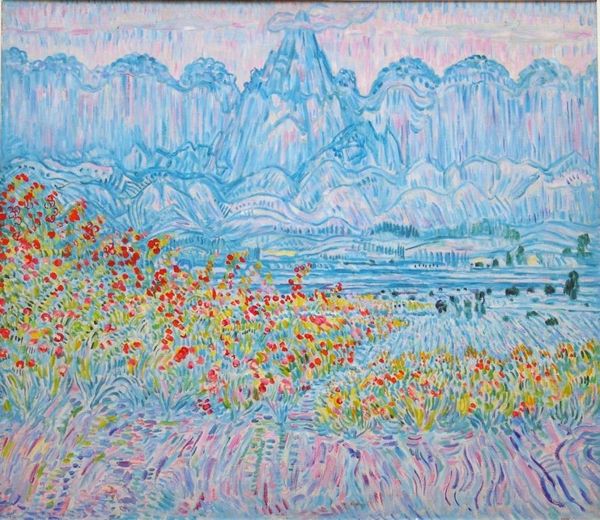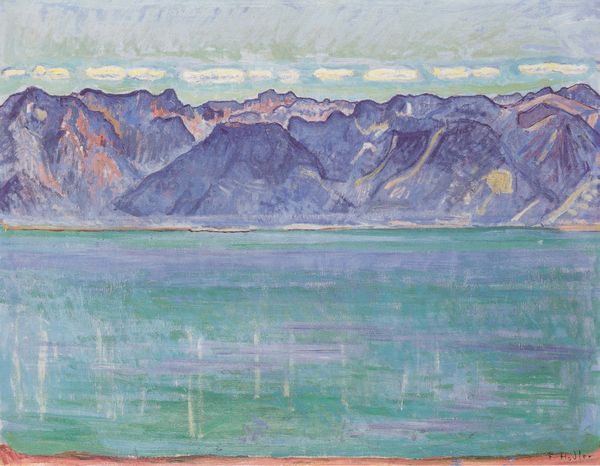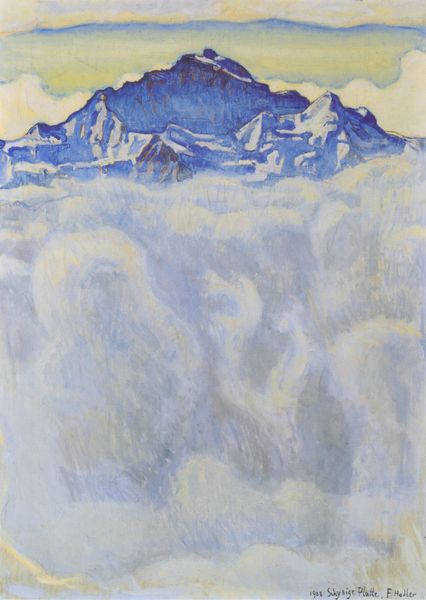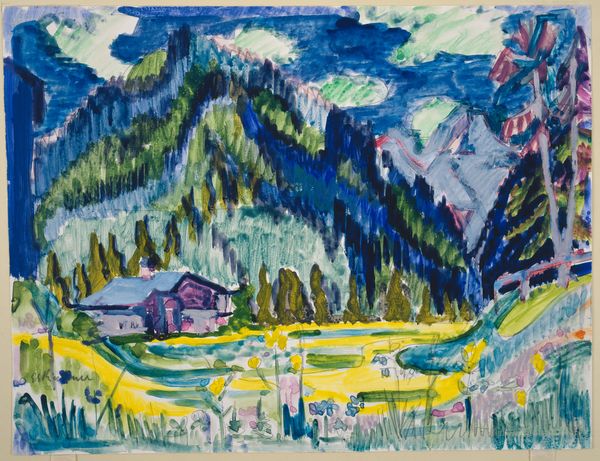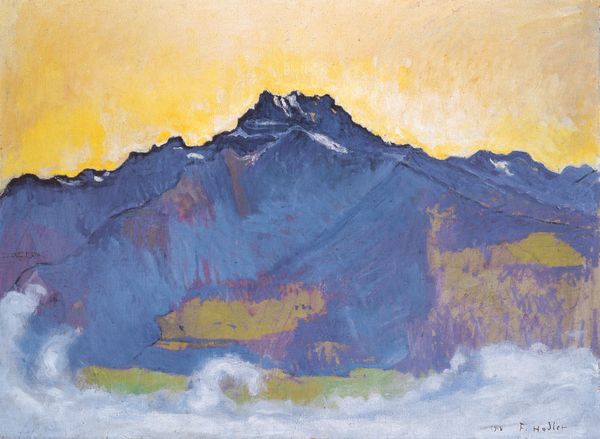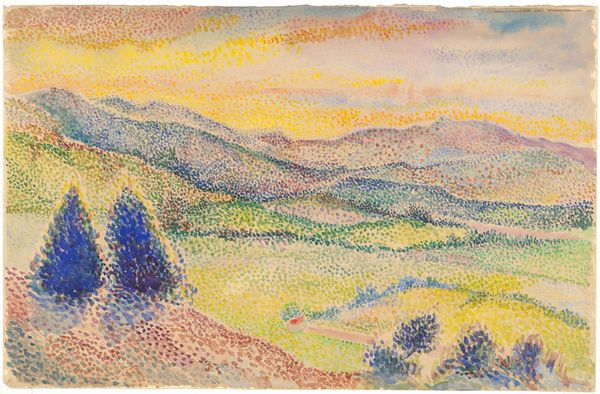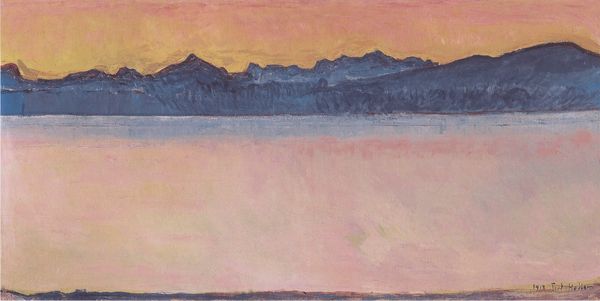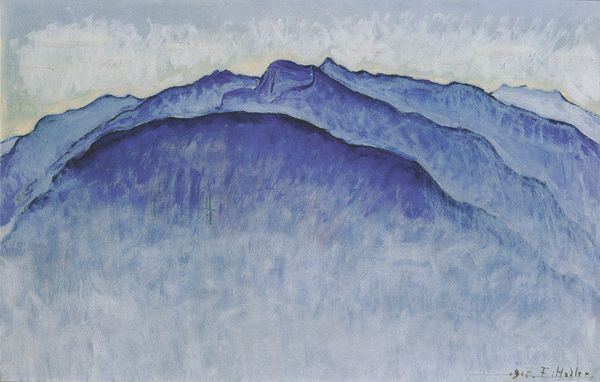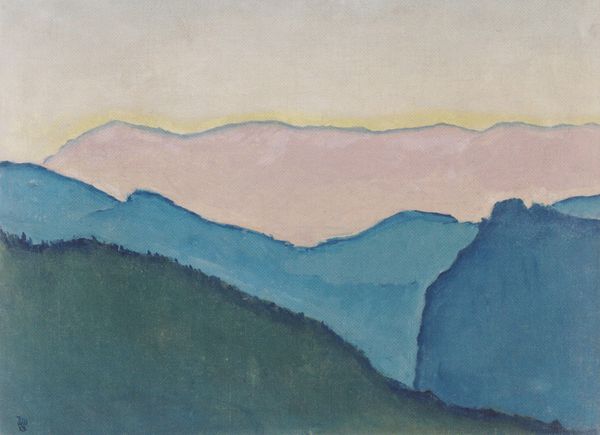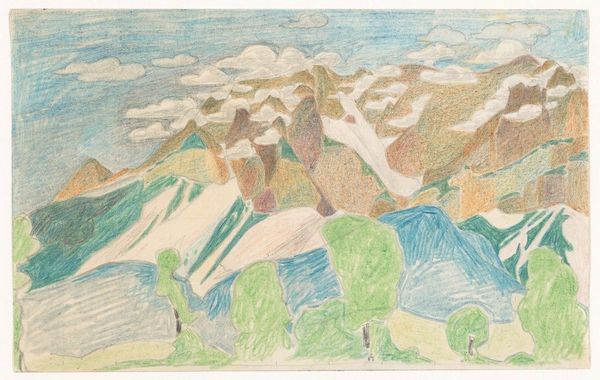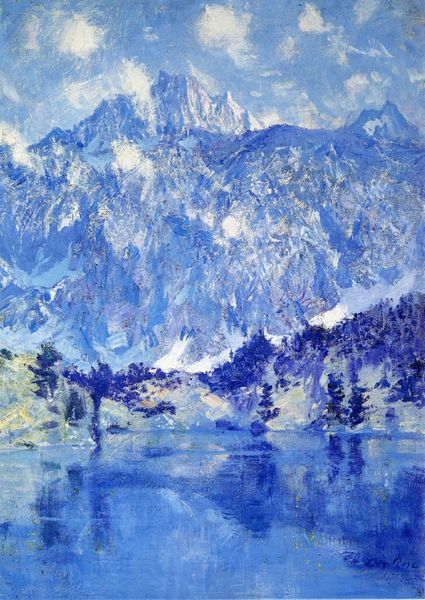
Dimensions: 105 x 150 cm
Copyright: Sattar Bahlulzade,Fair Use
Editor: Sattar Bahlulzade's "Tears of Kepez," created in 1965, presents this stunning, almost dreamlike landscape. The cool blues and greens create a serene, melancholic mood, at least to me. What symbols or stories do you see embedded within it? Curator: It’s interesting you perceive melancholy. Look closely at the mountain reflected in the water. Water often represents the unconscious, the hidden self. The sharp, almost weeping vertical strokes, are mirrored, a visual echo implying a search for understanding, perhaps a painful recognition of inner turmoil. The mountain, a potent symbol of steadfastness and aspiration, dominates. Editor: So, you are saying the title refers to the reflections of the mountains. Curator: Not only physically, but metaphorically, I suggest. These aren't just geographic features. Bahlulzade was deeply connected to the Azerbaijani landscape, imbuing it with personal and cultural meaning. Note how the lighter floral colors sit in the foreground. What does that color story tell us? Editor: The foreground, in comparison, bursts with tentative warmth. Like hope, peeking through? Curator: Precisely! It speaks to resilience, doesn't it? How cultural memory persists and transforms, even in the face of sorrow. The expressionistic style enhances this emotive quality. The visual symbols and motifs become a potent tool for processing emotional and cultural experiences. Editor: That’s a compelling perspective. It gives the artwork such depth to consider landscape not just as scenery, but as a mirror reflecting personal and cultural narratives. Curator: Absolutely. Understanding the symbolic language artists employ unlocks new levels of appreciation. A powerful expression of landscape holding layers of the artists emotions and identity!
Comments
No comments
Be the first to comment and join the conversation on the ultimate creative platform.
